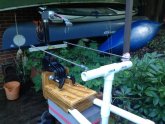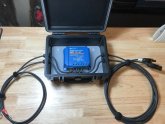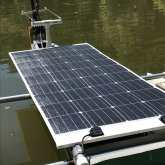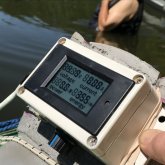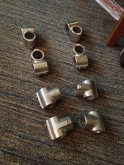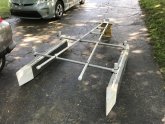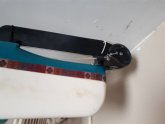Over the last few years I've been tinkering with my sea kayak by adding an electric trolling motor, marine battery, Renogy 160 watt marine solar panel Victron 75/15 MPPT charge controller. I rebuilt the 28lb thrust Minn Kota trolling motor with a higher efficiency prop and replaced the old resistor speed selector with a pulse width modulation speed controller. I build a tiny console with the variable resistor to the PWM unit and added a power meter for keeping track of my battery's power consumption in the cockpit. I keep upgrading its components every chance I get and now I trying to build a large lithium battery to replace the marine deep cycle lead acid battery. Learning from Will on which batteries would be affordable and provide better range beyond my current configuration. 





